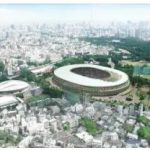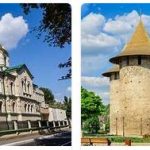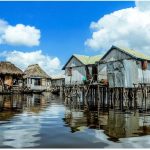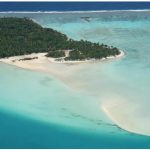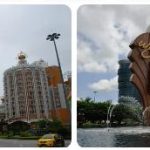Japan: Various travel information
How to get to Japan
By plane
The plane is the cheapest and of course the fastest way to reach Japan. Overall, the country has three international airports of particular importance, as they offer global connections. These three airports are Narita Airport in Tokyo, Kansai Airport in Osaka and Chubu Centrair Airport in Nagoya. Fukuoka Airport is also important as it provides flight connections from the southern island of Kyushu to other Asian countries.
By ship
The second way to get to the Japanese island nation is by ship connections between Japan and China, Korea, Taiwan and Russia. The largest and most important ports in the country are Fushiki, Hakata, Hiroshima, Kobe, Nagoya, Naha (Okinawa), Niigata, Osaka, Shimonoseki, Tsushima and Wakkanai (Hokkaido).
Citizens of the EU and numerous other countries do not require an entry visa to enter the country as a tourist.
Travel in the country
By plane
Inner-Asian and regional flights go mainly via Chitose Airport in Sapporo, Naha Airport in Okinawa, Haneda Airport in Tokyo and Itami Airport in Osaka. The regular domestic tariffs are relatively expensive. Therefore, it is advisable to consider the numerous discount offers for tourists. These are usually cheaper.
By car
Although driving a car in Japan is not very difficult, non-Japanese drivers should stay away from urban traffic in the Kanto and Kansai metropolitan areas. It is better to use the excellent public transport network there. As far as the traffic signs are concerned, these (even in the country) are mostly in English as well as in Japanese. The driving style of the people in the country is quite cautious.
Please note that petrol stations in Japan do not accept foreign credit cards! Find addresses
A Japanese address cannot be found in the same way as in Germany. Only major streets in Japan’s cities are shown on the map. First you have to find the neighborhood, e.g. Minami-Azabu. A number indicates a quadrant in the quarter. Then there is a sub-district, e.g. Minato-Ku, there you stand at the subway exit and have to decipher a local sign with further information on the streets on site. Don’t be afraid if the Japanese try to help. Japanese people who are unfamiliar with the area also stand in front of the local signs looking for addresses. It is therefore a good idea to get directions beforehand by telephone or fax. Many restaurants, shops and hotels also have a business card with a map printed on the back. If you want to buy an architecture or art guide to visit specific places, it is advisable to
Railroad, Shinkansen
Japan has a rail network that is one of the fastest and most punctual in the world. It’s about 20,200 kilometers long. The Superexpress Shinkansen runs over a distance of around 3,000 km. This reaches a top speed of over 300 km/h. In addition, Japan has the longest railway tunnel in the world, the Seikan Tunnel, which is almost 54 kilometers long. 23.3 kilometers of it run under the sea. The tunnel represents the connection between the two main Japanese islands of Hokkaido and Honshu (Honschu). The first high-speed train ran in 1964 on the occasion of the Olympic Games.
On March 5th, the new high-speed train of the Shinkansen express trains, the “Hayabusa” made its maiden voyage. The train connects the cities of Tokyo and Aomori in the north of the island of Honshu, 675 km apart, at speeds of up to 320 km/h.
By bus
Buses are much cheaper than traveling by plane or express train. Night buses also run. These are very spacious and comfortable. Most of the larger cities are connected by bus. If you want to buy a ticket, you should contact one of the local travel agencies.
In the big cities there are local buses (senro basu), which have a somewhat complicated tariff system: after boarding (by the way through the back door) a ticket is taken from the machine. A number is noted on this ticket. At the front of the bus there is an electronic display board showing this number and the associated price. The prices increase as the journey progresses. If you want to get off, you press the stop request button and then you have to look for the relevant price on the display board that corresponds to the number of the ticket. Number slip and money are then given to the driver in the payment machine. Then you get out through the front door. As the fare usually has to be paid appropriately, there are changing machines in the bus. It is also problematic that the names of the stops are usually only announced in Japanese. You should therefore ask the bus driver for the correct stop.
Road traffic
In Japan there is left-hand traffic.
In order to avoid trouble with the police or even the courts, one should strictly adhere to the traffic rules applicable in the country. The maximum speeds shown can of course be reduced or increased by traffic signs. Regardless of the information given here, it is advisable to obtain detailed information from the ADAC, the AvD or the traffic clubs in the country concerned.
The Japanese highways are chargeable.
If you want to rent a car in Japan, you can do so from 5,000 yen. It’s worth it, especially since gasoline prices are lower than in Europe. An international driver’s license is required to rent a car. Unfortunately, this is not accepted by many Japanese car rental companies. You should therefore clarify beforehand whether you can use your international driver’s license at all. Renting a motorcycle is less common in Japan. The lenders are accordingly scarce. But you can turn to Sashu in Kyoto, for example.
There is strict action against illegal parking in Japan.
Japan has a very high level of motorization. There are around 560 vehicles. per 1,000 residents. In comparison, there are around 541 vehicles in Germany. per 1,000 residents. The country has 1 million kilometers of roads, around 50% of which are paved. The longest underwater car tunnel in the country crosses Tokyo Bay with a total length of around 10 km. This “Tokyo-wan-Aqua-Line” connects the industrial regions of Kawasaki and Kisarazu across the Bay of Tokyo via an adjoining bridge with a length of 4.4 kilometers. The transition from bridge to tunnel takes place on the artificial island of Umi hotaru. The tunnel tube lies around 60 meters below the water surface and has two lanes in each direction.
Currency, goods, customs regulations
Currency
The national currency of Japan is the yen.
Cheap goods, souvenirs,
lacquer bowls are very popular. Silk, fans, judo equipment, paper lanterns or traditional toys as well as kimonos and yukatas (Japanese pajamas) as well. It is important to ensure that the quality is good and that you do not confuse a kimono with a yukata. Electronic devices cost about as much as in Germany. But: when you leave the country there is a VAT refund on presentation of the receipts and passport.
In Japan there are numerous small shops such as Seven-Eleven that are open until midnight and sell groceries and household goods. The big department stores in the big cities offer everything your heart desires. The food departments in the basement are recommended for lunch. There are also shopping streets for all luxury goods.
Import and export of goods The import and export of weapons, ammunition or explosives is strictly prohibited. In addition, the import and export of plants and animals protected under the Washington Species Protection Act is prohibited. Violation can result in severe penalties.
Tourist office
Japan National Tourism Organization
Tokyo Kotsu Kaikan Building
2-10-1 Yuraku-Cho
Chiyoda-ku
JP-Tokyo 100-0006
Tel: 03 – 32 01 33 31
www.jnto.go.jp
www.japantravelinfo.com
Japanese tourist office in Germany
Kaiserstraße 11
60311 Frankfurt/M.
Tel: 0049 – (0) 69 – 20 353
Email: fra@jnto.de
Web: www.jnto.de
Infectious diseases
In Japan, the following infectious diseases are to be expected in Germany and Central and Northern Europe:
- Malaria: There is no risk of malaria infection
- Lyme disease – especially in the months of April to October
- Typhus – sporadic occurrence in the bushland of the river valleys in the south of the country
- Fox tapeworm
- Hepatitis A and B
- Japan encephalitis – especially during the rainy season with an increased incidence of vector mosquitoes
- Polio, polio
Recommended vaccinations
when traveling to Japan are recommended vaccinations against the following diseases:
- Diphtheria – a vaccination against diphtheria should always exist, also in the home country.
- Hepatitis A and B
- Japan encephalitis – but only for those traveling to certain vulnerable rural areas
- Polio, polio – vaccination against polio should always exist, also in the home country.
- Tetanus – a vaccination against tetanus should always exist, also in the home country.
Vaccination requirements There are no vaccination regulations when entering or staying in the country.
Warning notices
Foreign Office of the Federal Republic of Germany
Citizens Service
Telephone: 0049 – (0) 30 – 5000 – 2000
www.auswaertiges-amt.de/de
Japan: embassies, consulates
Visit Countryaah for a full list of Japan embassies and consulates in each country around the world.
Japanese representations in Germany
The building of the Japanese embassy was built during the Nazi era from 1938 to 1942 according to plans by the architect Ludwig Moshamer (1885-1946) under the direction of Albert Speer (1905-1981) – Hitler’s favorite architect. It should be remembered that Germany and Japan were close allies at the time.
The previous building had been demolished because of the plans for a huge north-south axis of the planned “world capital Germania”. As a substitute for the Japanese Empire was a vast land in the new embassy quarter in the Tiergarten. This here then constructed building impressed in the style of classicism.
The stately building was then badly damaged in the course of the 2nd World War and then stood empty for several decades. It was only rebuilt in the old style by Kishō Kurokawa (1934-2007) and Tajii Yamaguchi in the mid-1980s, but had to be extensively rebuilt for use as an embassy building between 1998 and 2000 – the chief architect was Ryonel Amemiya. In the course of the renovations, the main entrance was moved to Hiroshimastraße, although the front of the building faces Tiergartenstraße. It should be mentioned that at the top of the building above the main entrance there is a shiny gold chrysanthemum – the symbol of the Japanese tennos (emperor).
German representations in Japan
Embassy of the Federal Republic of Germany in Tokyo
4-5-10, Minami-Azabu
Minato-ku
Tokyo 106-0047
Tel: 0081 – (0) 3 – 57 91 77 00
Email: info@tokyo.diplo.de
Web: www.tokyo. diplo.de
Consulate General in Osaka
Umeda Sky Building, Tower East, 35th Fl., 1-1-88-3501, Oyodonaka, Kita-ku
Osaka 531-6035.
Tel: 0081 – (0) 6 – 64 40 50 70
E-Mail: info@osaka-kobe.diplo.de
Web: www.osaka-kobe.diplo.de
You can find other honorary consulates in: Fukui, Fukuoka, Hiroshima, Nagoya, Sapporo and Sendai.
Austrian representations in Japan
Embassy of the Republic of Austria in Tokyo
1-1-20 Moto Azabu
Minato-ku
Tokyo 106-0046
Tel: 0081 – (0) 3 – 34 51 82 81
Email: tokio-ob@bmaa.gv.at
Web: www.aussenministerium. at/tokio
Honorary consulate in Hiroshima
c/o Hiroshima Home Television Co. Ltd., 19-2 Hakushima Kita-machi, Naka-ku
Hiroshima City 730-8552
Tel: 0081 – 82 – 221 49 64
E-Mail: austria@home-tv.co.jp
Honorary Consulate General in Osaka
c/o Ueno Fine Chemicals Industry, Ltd., 2-4-8, Koraibashi, Chuo-ku
Osaka 541-8543
Tel: 0081 – 6 – 62 02 31 77
E-Mail: m_yokoyama@ueno-fc.co.jp
Honorary Consulate in Sapporo
c/o Fuji Megane Co. Ltd., Fuji Megane Bldg. 6F, Kita-1 Nishi-3, Chuo-ku
Sapporo 060-0001
Tel: 0081 – 11 – 261 32 33
E-Mail: austrian-consulate- sapporo@fujimegane.co.jp
Japanese representations in Austria
Embassy in Vienna
Heßgasse 6
1010 Vienna
Tel: 0043 – (0) 1 – 53 19 20
Email: info@embjp.at
Web: www.at.emb-japan.go.jp
Honorary Consulate General in Salzburg
Altenstrasse 98
5020 Salzburg
Tel: 0043 – (0) 662 – 625 155
E-Mail: japan.consulate@sag.at
Swiss representations in Japan
Embassy in Tokyo
5-9-12, Minami-Azabu
Minato-ku
Tokyo 106-8589
Tel: 0081 – (0) 3 – 54 49 84 00
Email: tok.vertretung@eda.admin.ch
Web: www.eda.admin.ch/tokyo
Consulate General in Osaka
Meiji Yasuda Seimei Osaka Umeda Bldg 14F
3-20, Umeda 3-chome
Kita-ku
Osaka 530-0001
Tel: 0081 – 6 – 47 97 23 99
E-Mail: osaka@honorarvertretung.ch
Japanese representations in Switzerland
Embassy in Bern
Engestraße 53
3012 Bern Postal
address: Postfach 51, CH-3000 Bern 9
Tel: 0041 – (0) 31 – 300 22 22
Email: eojs@bluewin.ch
Web: www.ch.emb-japan.go.jp
Consulate in Geneva
Rue de Lausanne 82
1202 Geneva
Tel: 0041 – (0) 22 – 716 99 00
Email: consulate@br.mofa.go.jp
Web: www.geneve.ch.emb-japan.go.jp
Consulate General in Zurich
Utoquai 55
8008 Zurich
Tel: 0041 – (0) 44 – 269 40 46

